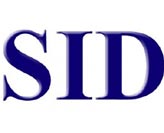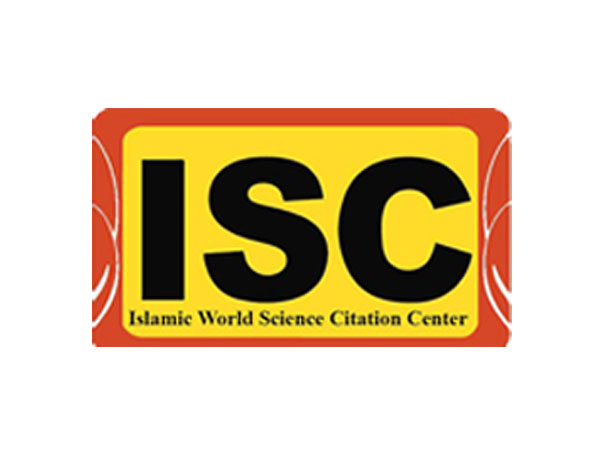About the journal
journal of the Philosophy of Education Society
Print ISSN: 2538-2802
Online ISSN: 2538-6301
|
[Insert Photo] |
Dr. Mohsen Imani Naeini |
Associate Professor |
Tarbiat Modares University |
PhD in Educational Sciences |
Editor-in-Chief |
|
[Insert Photo] |
Dr. Khosrow Bagheri Noaparast |
Professor |
University of Tehran |
Philosophy of Education |
Senior Editor |
|
[Insert Photo] |
Dr. Tayebeh Tavassoli Estahbanati |
Assistant Professor |
University of Qom |
PhD in Philosophy of Education |
Managing Editor |
|
[Insert Photo] |
Dr. Ahmad Banyasady |
Assistant Professor |
Malayer University |
PhD in Philosophy of Education |
Executive Manager |
|
[Insert Photo] |
Dr. Akbar Rahnama |
Associate Professor |
Shahed University |
Philosophy of Education |
Editorial Member |
|
[Insert Photo] |
Dr. Seyed Mehdi Sajjadi |
Professor |
Tarbiat Modares University |
Philosophy of Education |
Editorial Member |
|
[Insert Photo] |
Dr. Bakhtiar Shabani Varki |
Professor |
Ferdowsi University of Mashhad |
Philosophy of Education |
Editorial Member |
|
[Insert Photo] |
Dr. Alireza Sadeqzadeh Qomsari |
Associate Professor |
Tarbiat Modares University |
Philosophy of Education |
Editorial Member |
|
[Insert Photo] |
Dr. Masoud Safaei Moghaddam |
Professor |
Shahid Chamran University of Ahvaz |
Philosophy of Education |
Editorial Member |
|
[Insert Photo] |
Dr. Saeed Zarghami |
Associate Professor |
Kharazmi University |
Philosophy of Education |
Editorial Member |
|
[Insert Photo] |
Dr. Yahya Ghaedi |
Associate Professor |
Kharazmi University |
Philosophy of Education |
Editorial Member |
|
[Insert Photo] |
Dr. Seyed Mansour Marashi |
Associate Professor |
Shahid Chamran University of Ahvaz |
PhD in Philosophy of Education |
Editorial Member |
|
[Insert Photo] |
Dr. Mohammad Hassan Mirzamohammadi |
Professor |
Shahed University |
Philosophy of Education |
Editorial Member |
|
[Insert Photo] |
Prof. Nuraan Davids |
Professor |
Stellenbosch University |
Philosophy of Education |
International Editorial Member |
-
Open Access Article
1 - Examining the Concept of Child Agency Within Two Frameworks: "Child as a Social Actor" and the "Theory of the Agentic Human" and Its Educational Implications for Early Childhood Educators
Masume Kiyani *Issue 10 , Vol. 2 , Spring_Summer 2025 -
Open Access Article
2 - A new conceptualization of the nature of teaching and the professional development of teachers based on Gilles Deleuze's ideas about the nature of learning
fahimeh gandomi *Issue 10 , Vol. 2 , Spring_Summer 2025 -
Open Access Article
3 - The Reflective Mirror: Narrative and Its Application in the Experience of the "Other" in Educational Relationships: A Framework for Empathetic Teacher Training
Narges Sajadieh *Issue 10 , Vol. 2 , Spring_Summer 2025 -
Open Access Article
4 - From Wandering Art to Social and Transformative Art: A Perspective on Teacher Art Education in Light of Maxine Greene's Educational Philosophy
sadeq keshavarzian * ، khosrow Bagheri ، Banyasady Ahmad ، MAHMOUD MEHRMOHAMMADI ، narges sajadeh ، Afsaneh AbdoliIssue 10 , Vol. 2 , Spring_Summer 2025 -
Open Access Article
5 - Philosophy of Comparative Education; concept, function, process
mohammad mirzamohammadi *Issue 10 , Vol. 2 , Spring_Summer 2025 -
Open Access Article
6 - The Transition of “Teacher Training Foundations” in Iran during the 1950s and 1960s
shahin iravani *Issue 10 , Vol. 2 , Spring_Summer 2025 -
Open Access Article
7 - Metaphysical -Epistemological Paradigm: The philosophical Basis of Plicy Making in Iran's Teacher Education (Explanation and Criticism)
DR.SAYED MAHDI SAJADI * ، مریم نادریIssue 10 , Vol. 2 , Spring_Summer 2025 -
Open Access Article
8 - Conceptual Challenges of Teacher Education in Iran
Mahmoud Talkhabi *Issue 10 , Vol. 2 , Spring_Summer 2025 -
Open Access Article
9 - Analysis of Marcel's philosophical ideas and how it affects and applies it in creating Assertiveness skills by the teacher
فهیمه اکبرزاده *Issue 10 , Vol. 2 , Spring_Summer 2025 -
Open Access Article
10 - The application of mathematics education in the formation of philosophical disposition
مجتبی پورکریمی هاوشکی * ، Rasoul eskandariIssue 10 , Vol. 2 , Spring_Summer 2025 -
Open Access Article
11 - The Mission of the Philosopher of Education and the Question of Artificial Intelligence: A Glance at Iran
ahmad baniasadi *Issue 10 , Vol. 2 , Spring_Summer 2025 -
Open Access Article
12 - Explaining the Parent School Concept Based on Emergentism Approach and Its Role in Advancing Early Childhood Education
Zahra َAsaadi ، Masoud Safaie Moqaddam * ، seyyed jalal hashemi ، Parvaneh ValaviIssue 10 , Vol. 2 , Spring_Summer 2025 -
Open Access Article
13 - The Ethics of Artificial Intelligence in Education
Ramazan Barkhordari *Issue 10 , Vol. 2 , Spring_Summer 2025
-
Open Access Article
1 - Conceptual Underlyings of Childhood in the Evulution of History: Toward an Islamic Conceptualization of Childhood
Narges Sajadieh ، سعید آزادمنش *Issue 1 , Vol. 1 , Autumn_Winter 2016 -
Open Access Article
2 - Formulation of Implicit Philosophy of Education inAncient Iranian Culture
دکتر سمانه خلیلی * ، khosrow BagheriIssue 2 , Vol. 2 , Spring_Summer 2017 -
Open Access Article
3 - Maxine Greene's Public Space: Beyond the Walls of the Standard Education
افسانه عبدلی ، Bakhtiar Shabani Varaki * ، Tahereh Javidi Kalateh Jafarabadi ، دکتر محمدرضا آهنچیانIssue 1 , Vol. 1 , Autumn_Winter 2016 -
Open Access Article
4 - The Relation of Anthropological Foundation of the Theory of Bildung with the idea of University in the Thought of Wilhelm von Humboldt
Ahmad Banyasady ، Mahdi Sajadi * ، khosrow Bagheri ، Meysam SefidhkhoshIssue 3 , Vol. 1 , Spring_Summer 2018 -
Open Access Article
5 - Embodiment Learning: A Critique of Neurophilosophy Approach to Cognition and Learning
bijan babaei ، بختيار شعباني وركي * ، Tahereh Javidi Kalateh Jafarabadi ، Ali MoghimiIssue 2 , Vol. 2 , Autumn_Winter 2018 -
Open Access Article
6 - The Nature and Realm of Responsibility of Human from the Perspective of Sartre and Islamic View of Action
سعید آزادمنش *Issue 3 , Vol. 1 , Spring_Summer 2018 -
Open Access Article
7 - Discourse Analysis of Teacher Education in the Rule of the Islamic Republic of Iran
Reza Haqverdi * ، رمضان برخورداری ، Susan Keshavarz ، Alireza MahmoudniaIssue 4 , Vol. 2 , Autumn_Winter 2019 -
Open Access Article
8 - The Exploration of "Moral Autonomy" as an Aim of Education (With Emphasis on the Views of Kant and Peters)
طاهره بهمنی * ، masoud safaei moghadam ، دکتر محمد جعفر پاک سرشت ، دکترسید منصور مرعشیIssue 1 , Vol. 1 , Autumn_Winter 2016 -
Open Access Article
9 - Exploration of Philosophical Foundations of Preservation of Law and its Educational Implications in viewpoints of Plato and Kant
سعید آزادمنش * ، دکتر شهین ایروانیIssue 2 , Vol. 2 , Autumn_Winter 2018 -
Open Access Article
10 - Faith, Doubt and Education
محمد رضا مدنی فرIssue 1 , Vol. 1 , Autumn_Winter 2016





